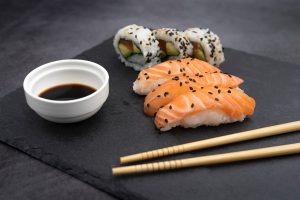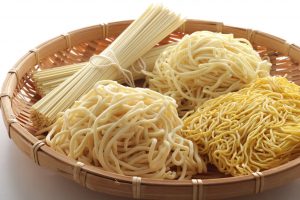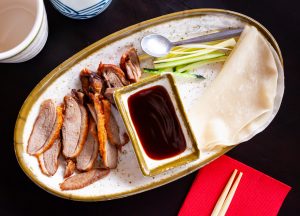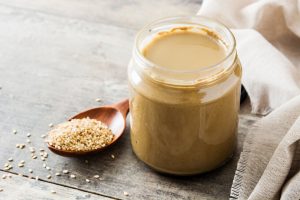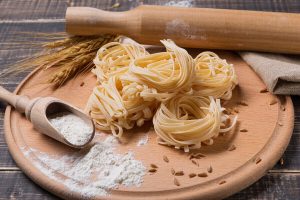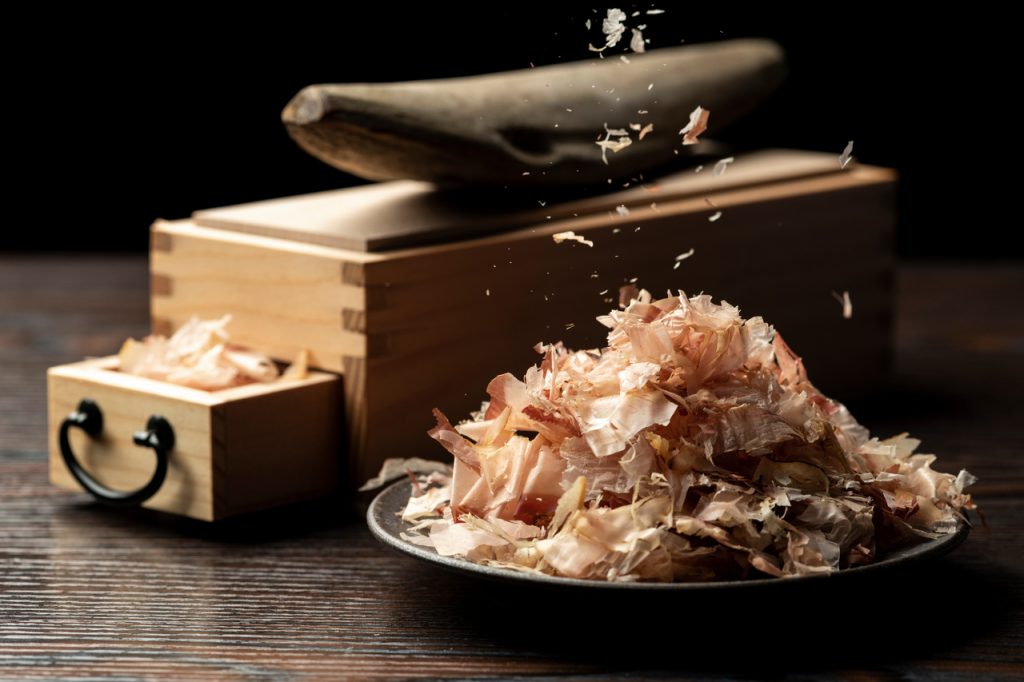
Japanese cuisine has a long list of seasonings and flavorful ingredients that are key to making their dishes delectable. Among these Japanese ingredients, one is slowly becoming a hit outside Japan. It is called bonito flakes or katsuobushi in Japanese. You might be familiar with it as a soup or ramen topping, but katsuobushi is more than just a garnish. Want to learn more about this food wonder? Read on to find out!
What Are Bonito Flakes (Katsuobushi)?
Bonito flakes or katsuobushi are from fermented, smoked, and dried filleted fish. Now, what fish is katsuobushi made of? Well, these flakes come from bonito, more specifically skipjack tuna (katsuo). Thin flakes or shavings are the most common version available in the market. However, you can also buy smoked and dried bonito fish fillets that you can just shave on your own.
Katsuobushi has a smoky and slightly fishy flavor. It is like masago (Capelin roe) and nori (dried seaweed), commonly used garnishes for Japanese cuisine that elevate the seafood flavors of a dish. Known for their umami flavor, there are a whole lot of ways to use katsuobushi flakes.
Types of Bonito Flakes
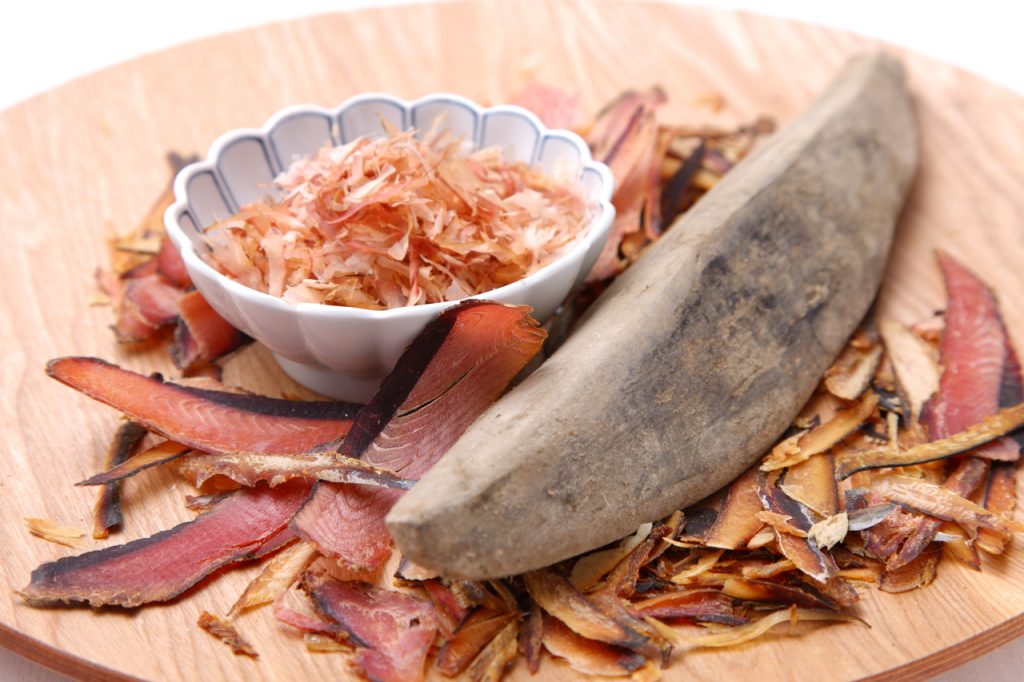
There are different types of dried bonito flakes. Each has distinct characteristics that you can use for various culinary purposes.
- Hanakatsuo – These Japanese fish flakes are thin yet large pieces of shavings that are pink in color. Areas that have deeper color are the dark meat sections of the fish. These are best for garnishing ramen or takoyaki.
- Karebushi – These are katsuobushi that undergo fermentation and drying twice. Best for making clear dashi broth because of the color.
- Honkarebushi – This refers to shaved Japanese bonito fish that has been fermented and dried at least three times. Its process results in a richer, more complex, and deeper flavor. This high-grade katsuobushi is an excellent alternative to karebushi. You can use this in making dashi soup or miso soup.
- Arabushi – This katsuobushi has a strong smoky and slightly acidic flavor with a lingering aroma. Arabushi is a dried and smoked fillet of bonito fish that did not undergo fermentation. It has deeper color because of the dark meat that mainly comprises it — best for soups and dressings.
- Atsukezuri – This is a thicker version of hanakatsuo (more than 0.02 mm in thickness). It has a robust taste and is best for making braised dishes.
- Itokezuri – This is also called “string shave” because of its thin, string-like appearance. You’ll usually find itokezuri as garnish or toppings for dishes like salads.
How to Cook With Bonito Flakes
There are myriad ways to use bonito flakes in your cooking. These versatile fish flakes are very common in Japanese cuisine. Chefs use these not only as toppings but even as an added layer of flavor for salads, sauces, and soups. You’ll be amazed to find different types of ramen with katsuobushi as toppings or the soup’s broth seasoning. It’s because any flavorful Japanese soup starts with dashi (stock) made from a combination of katsuobushi and kombu (dried kelp).
Other than noodles, this ingredient also often accompanies rice. Okaka or chopped katsuobushi mixed with soy sauce is a popular onigiri filling and rice topping (okaka furikake). You can even spot it dancing atop freshly cooked takoyaki (octopus balls) and okonomiyaki.
So, if you’re up to some culinary exploration using this wonder food, below is a short list of easy bonito flakes recipes that will give you a head start!
Recipes With Bonito Flakes
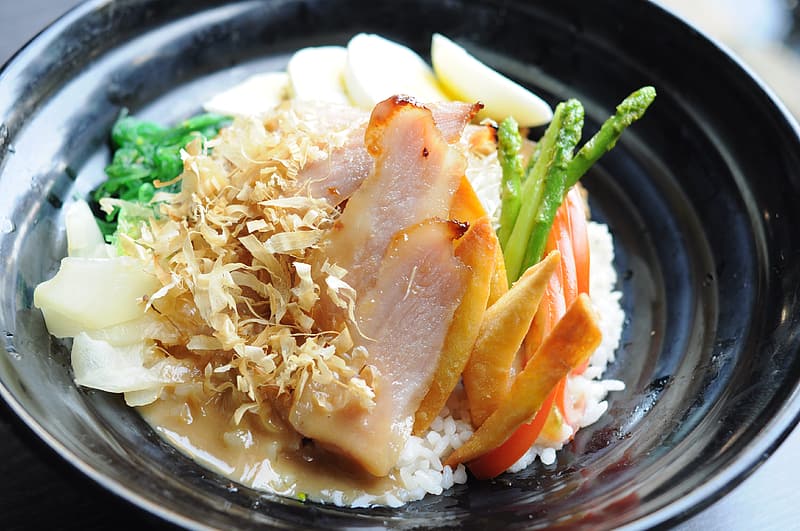
- Tamagoyaki Bento Box – Bring your artistic side and create this cute bento box that everyone will love! Using bonito flakes, add some umami goodness to your onigiri (rice balls). It also comes with a flavorful tamagoyaki or rolled omelet.
- Shoyu Ramen – Best for the cold season, this ramen is filling and umami-packed because of its flavorful stock seasoned with katsuobushi. We’re sure no one will judge you if you ask for another bowl.
- Miso Salmon with Sake Butter – If the way to someone’s heart is through their stomach, then this dish is what you need for your next dinner date. It has the flavors of sake butter combined with the seafood taste of miso sauce, topped with some dancing bonito flakes. What more could you ask for?
Where to Buy
If you happen to live near an Asian or Japanese minimart or grocery, finding a bag of bonito fish flakes is very easy. Otherwise, you can easily order one through online shops or retailers.
Want to do it in the traditional Japanese style? We recommend buying katsuobushi blocks (a chunk of processed bonito fillet) available online. Just remember also to avail a kezuriki or a wooden box plane. You’ll need it to shave your own katsuobushi!
How to Store
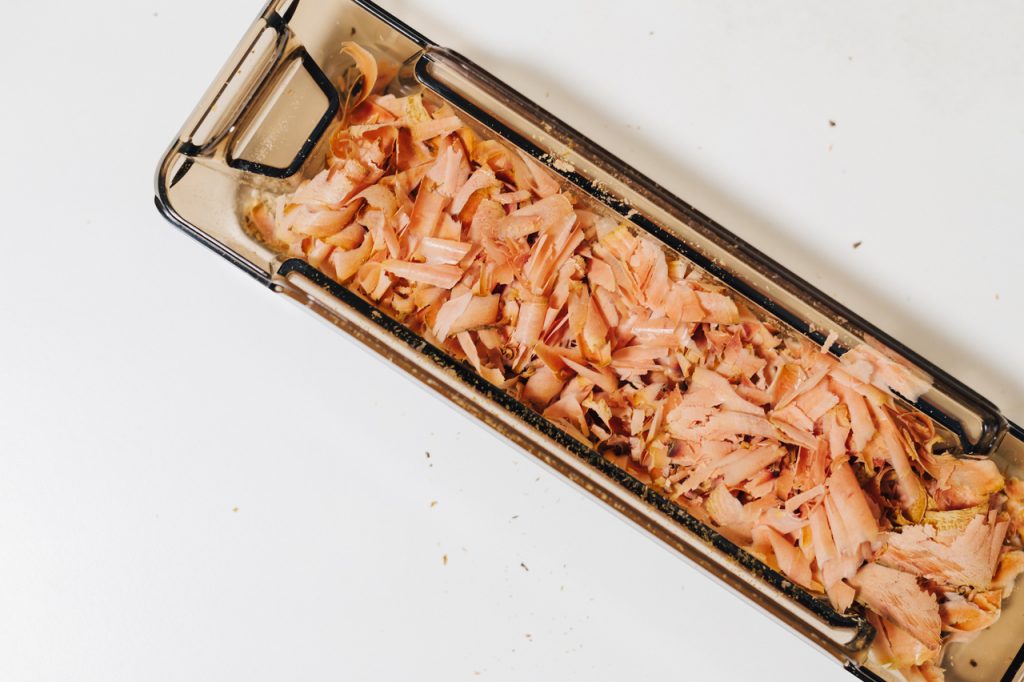
Since these Japanese fish flakes have already undergone processes to preserve them, they are effortless to store. Transfer them to airtight containers, and keep them in a cool, dry place to avoid bacterial growth.
If you are using the resealable bags that they usually come with, make sure to remove the remaining air inside the bag before sealing it. Katsuobushi is very sensitive to humidity and oxidizes quickly.
Now, we recommend using airtight bags or freezer containers if you live in a very humid area. Use them in storing your katsuobushi inside your freezer to help lengthen the shelf life of your fish flakes.
Frequently Asked Questions
Why do bonito flakes move?
Curious why these flakes seem to be moving on top of your food? Well, it’s nothing to worry about. Katsuobushi tend to move or dance when placed on top of hot food because of their light and thin characteristic. The steam and broth (if added as a soup topping) rehydrate these dried fish flakes, making them move in different directions until it’s totally soaked in water.
Are bonito flakes healthy?
Yes! Katsuobushi is healthy. According to the National Institute of Health (NIH), katsuobushi helps lower blood pressure, and improve brain function and one’s metabolism. And like any other tuna, it contains a high amount of protein and amino acids that are the body’s building blocks.
But of course, it’s best to consume these in moderation, as too much of anything is never good.
What can I substitute for bonito flakes?
Can’t find katsuobushi near you? Worry not! You can use nori sheets, baby anchovies, mackerel powder, dried kelp, or dried shiitake mushrooms as bonito flakes substitutes. These will still give you that seafood and umami taste that katsuobushi offers.
Was this page helpful?
Read Next: What Is Salami? Everything You Need to Know


